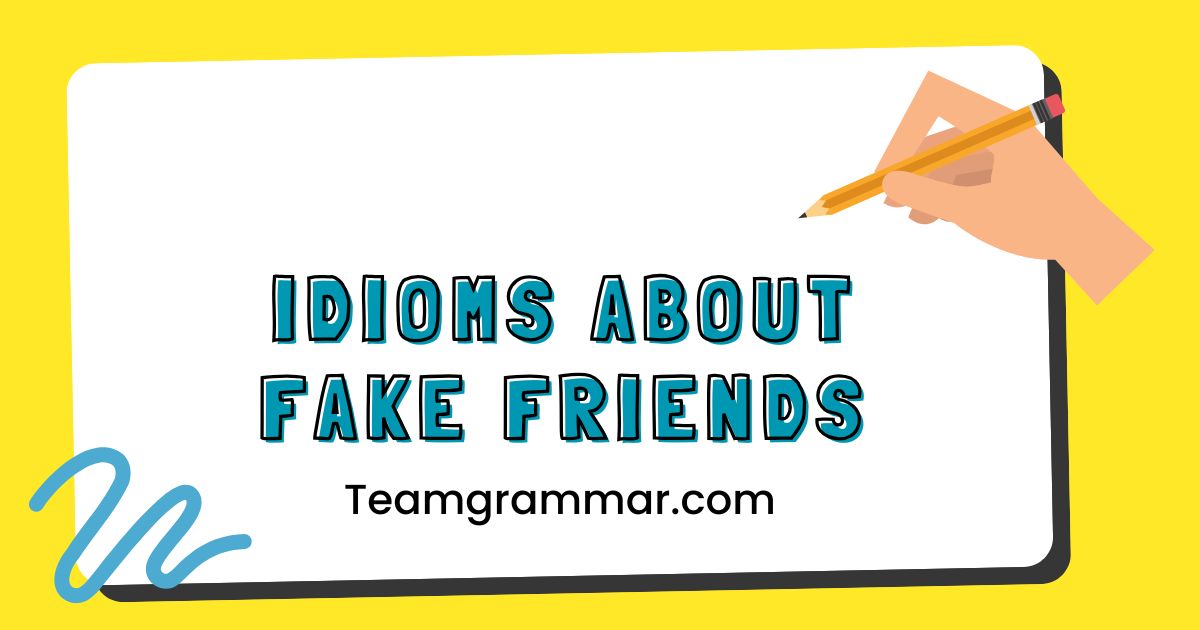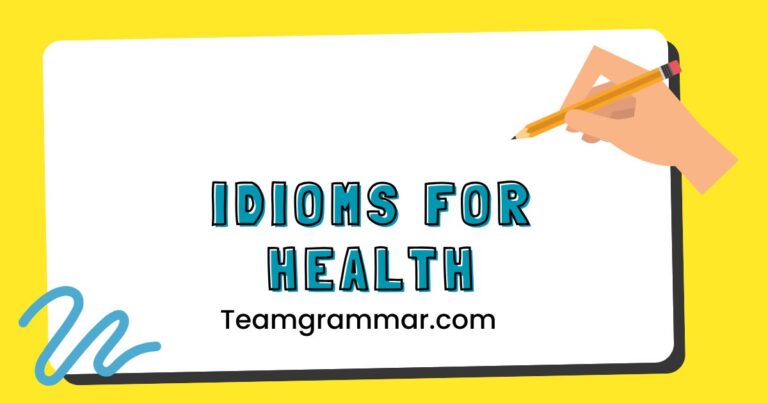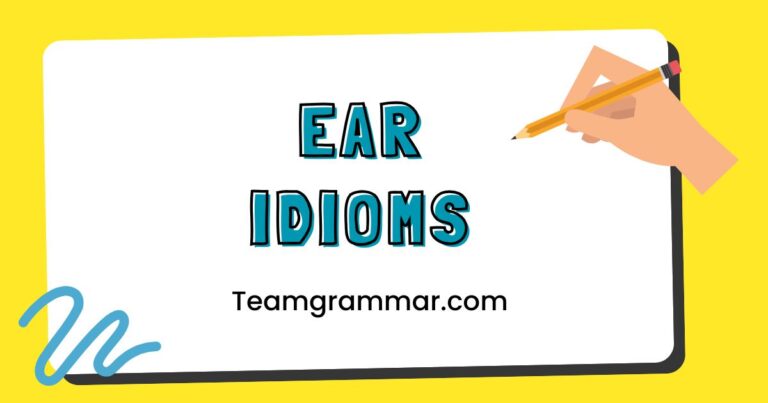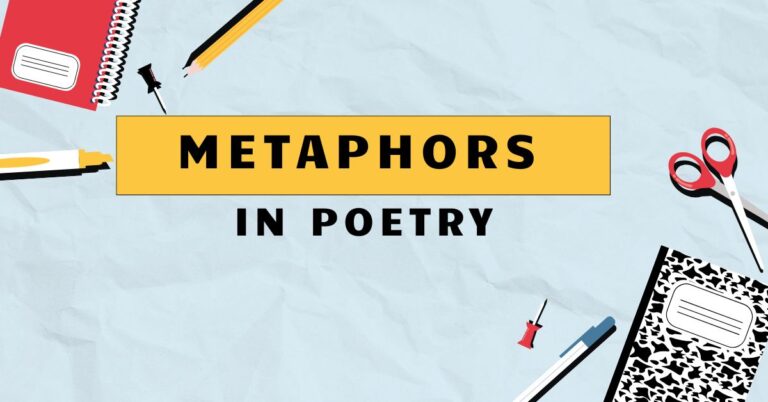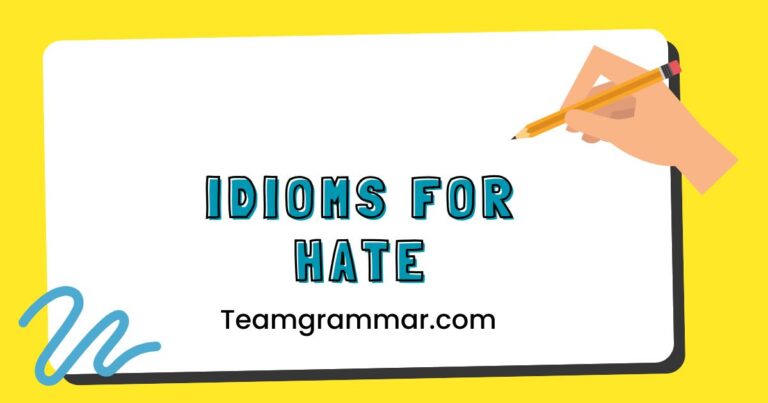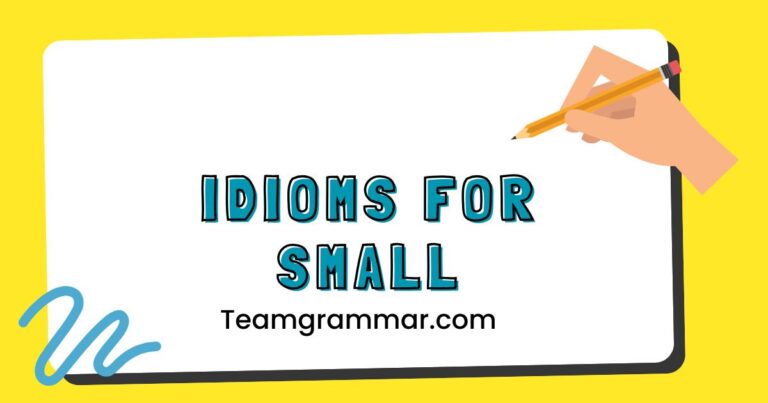33 Idioms About Fake Friends: Spotting False Friendship
Understanding idioms about fake friends is essential for navigating social complexities and improving your English proficiency. These idioms offer colorful and insightful ways to describe insincere relationships, helping you recognize and articulate situations involving disloyalty and betrayal.
Mastering these expressions enhances your communication skills, allowing you to express nuanced feelings and observations. This guide is perfect for English language learners, avid readers, and anyone interested in understanding the subtle dynamics of human relationships.
Table of Contents
- Introduction
- Definition of Idioms About Fake Friends
- Structural Breakdown of Idioms
- Types and Categories of Idioms About Fake Friends
- Examples of Idioms About Fake Friends
- Usage Rules for Idioms About Fake Friends
- Common Mistakes When Using Idioms About Fake Friends
- Practice Exercises
- Advanced Topics: Nuances and Context
- Frequently Asked Questions
- Conclusion
Definition of Idioms About Fake Friends
Idioms are expressions whose meanings cannot be understood from the literal meanings of the individual words. They are a crucial part of the English language, adding color and depth to communication.
Idioms about fake friends specifically describe individuals who appear to be supportive and loyal but are, in reality, deceitful or unreliable. These idioms often use figurative language to convey hidden intentions and the betrayal of trust.
Understanding these idioms enables you to recognize and articulate the subtle signs of insincerity in relationships.
These idioms can be classified as figurative expressions, meaning their intended meaning is different from the literal definition of the words used. They serve the function of providing a more vivid and relatable description of a person’s character or behavior than literal language would allow.
The context in which these idioms are used is typically social, focusing on interpersonal relationships and the dynamics of trust and betrayal. They are commonly used in conversations, literature, and media to describe characters or situations involving false friendship.
Structural Breakdown of Idioms
Idioms, by nature, defy standard grammatical rules because their meaning is not derived from the individual words but from the expression as a whole. Many idioms about fake friends consist of metaphorical language, where one thing is used to represent something else.
For example, “a wolf in sheep’s clothing” uses the image of a wolf disguised as a harmless sheep to represent someone who appears innocent but is actually dangerous.
The structure of these idioms often involves simple sentence patterns or common phrases that have taken on a figurative meaning over time. The key to understanding idioms is to recognize that they are fixed expressions; changing the words or their order can alter or destroy the meaning.
For instance, saying “a dog in sheep’s clothing” instead of “a wolf in sheep’s clothing” loses the impact and recognized meaning of the original idiom. Therefore, it’s essential to learn and use idioms in their established form.
Idioms often contain a subject and a verb, forming a complete thought within the expression. The subject is typically the person exhibiting the fake friendship, while the verb describes the action or characteristic associated with that behavior.
The overall structure creates a vivid image or scenario that encapsulates the essence of the person’s deceitful nature. Recognizing these structural elements aids in understanding and remembering the meaning of the idiom.
Types and Categories of Idioms About Fake Friends
Idioms describing fake friends can be categorized based on the specific aspect of false friendship they highlight. These categories include: those emphasizing betrayal, those focusing on insincerity, those highlighting opportunism, and those indicating hidden danger.
Each category provides a different lens through which to understand the nature of fake friendships.
Idioms Emphasizing Betrayal
These idioms focus on the act of treachery and disloyalty. They often involve actions that harm the trust and confidence placed in the “friend.” Examples include idioms that describe someone who talks negatively behind your back or takes advantage of your vulnerabilities.
Idioms Focusing on Insincerity
This category includes idioms that highlight the lack of genuine feelings or honesty in the relationship. These idioms describe people who put on a false front or say things they don’t mean.
They often involve deception and manipulation.
Idioms Highlighting Opportunism
These idioms depict friends who are only around when things are going well for you or when they need something. They disappear during difficult times, revealing their lack of true commitment.
These idioms emphasize the conditional nature of their friendship.
Idioms Indicating Hidden Danger
This category includes idioms that suggest the fake friend poses a potential threat. They may be plotting against you or waiting for an opportunity to harm you.
These idioms create a sense of unease and caution.
Examples of Idioms About Fake Friends
Here are several examples of idioms about fake friends, categorized to illustrate their different uses and meanings. Each category includes a table with example sentences to demonstrate how the idiom is used in context.
Fair-Weather Friend
A fair-weather friend is someone who is only a friend when things are going well and abandons you when you’re in trouble. This idiom highlights the conditional nature of the friendship, emphasizing that the person is only around during good times.
The following table provides examples of how to use the idiom “fair-weather friend” in sentences. These examples illustrate different contexts and situations where this idiom is applicable.
| Example | Explanation |
|---|---|
| “I thought Mark was my friend, but he turned out to be a fair-weather friend; he disappeared when I lost my job.” | Mark only supported the speaker when they were employed. |
| “She realized her so-called friends were just fair-weather friends when none of them offered help after her accident.” | Her friends only enjoyed her company when she was healthy and active. |
| “He’s a fair-weather friend; always around for parties but never there when you need a shoulder to cry on.” | He only participates in enjoyable activities, not in providing support. |
| “Don’t rely on him; he’s just a fair-weather friend who’ll vanish at the first sign of trouble.” | He cannot be depended on during difficult times. |
| “I learned the hard way that some people are just fair-weather friends, not true companions.” | The speaker experienced the disappointment of superficial friendships. |
| “When the business started failing, I discovered who my fair-weather friends were.” | The decline of the business revealed the insincerity of certain friendships. |
| “She accused him of being a fair-weather friend because he only called when he needed something.” | His calls were motivated by personal gain, not genuine friendship. |
| “Fair-weather friends are easy to spot; they’re the ones who celebrate your successes but ignore your struggles.” | Their behavior is characterized by selective support. |
| “He proved to be anything but a fair-weather friend, sticking by me through thick and thin.” | He demonstrated unwavering loyalty, contradicting the typical behavior of a fair-weather friend. |
| “It’s better to have a few true friends than many fair-weather friends.” | The value of genuine friendship outweighs the quantity of superficial relationships. |
| “The team’s fair-weather friends disappeared after they started losing games.” | Support waned as the team’s performance declined. |
| “She’s a fair-weather friend who is always happy to share in the good times but is nowhere to be found when things get tough.” | Her presence is contingent on positive circumstances. |
| “He thought they were close, but when he needed help moving, he found out they were just fair-weather friends.” | His request for assistance revealed the superficiality of the friendship. |
| “Fair-weather friends are like summer breezes; pleasant but fleeting.” | The comparison highlights the temporary nature of their support. |
| “I weeded out all the fair-weather friends and now only surround myself with people who genuinely care.” | The speaker intentionally removed superficial relationships from their life. |
| “She learned a valuable lesson about fair-weather friends during her financial crisis.” | The crisis served as a catalyst for understanding true friendship. |
| “He’s the kind of fair-weather friend who only calls when he wants to borrow something.” | His interactions are transactional rather than based on genuine connection. |
| “Fair-weather friends are often the loudest cheerleaders during your victories but the quietest during your defeats.” | Their support is selective and conditional. |
| “She realized she had too many fair-weather friends and not enough people she could truly count on.” | The imbalance highlighted the need for more meaningful relationships. |
| “He’s a classic fair-weather friend; always there for the celebrations but never for the consolations.” | His presence is limited to joyous occasions. |
| “It’s disappointing to discover that someone you considered a friend is actually just a fair-weather friend.” | The realization brings a sense of letdown and disillusionment. |
| “Fair-weather friends are like shadows; they follow you in the sun but disappear when it’s dark.” | The metaphor emphasizes their conditional presence and support. |
| “She learned who her true friends were and who were just fair-weather friends during her illness.” | Her illness served as a litmus test for the authenticity of her friendships. |
Backstabber
A backstabber is someone who betrays you by talking negatively about you behind your back or by sabotaging your efforts secretly. This idiom emphasizes the deceitful and harmful nature of their actions.
The following table provides examples of how to use the idiom “backstabber” in sentences. These examples illustrate different contexts and situations where this idiom is applicable.
| Example | Explanation |
|---|---|
| “I can’t believe he’s such a backstabber; he was smiling to my face while plotting against me.” | He was deceitful and harmful, pretending to be supportive while undermining the speaker. |
| “She found out her colleague was a backstabber when she overheard her spreading rumors to the boss.” | The colleague was secretly trying to damage her reputation. |
| “Watch out for Sarah; she’s a real backstabber who’ll do anything to get ahead.” | Sarah is ruthless and will betray others to achieve her goals. |
| “He felt betrayed when he realized his best friend was a backstabber, spreading lies about him.” | His best friend was secretly damaging his reputation by spreading false information. |
| “The company was full of backstabbers, all competing against each other through deceit.” | The workplace was characterized by betrayal and dishonesty. |
| “She confronted the backstabber who had been undermining her work for months.” | She addressed the person who had been secretly sabotaging her efforts. |
| “He warned me about the backstabbers in the office, advising me to be careful who I trust.” | He cautioned the speaker about the deceitful people in the workplace. |
| “The backstabber’s actions caused a lot of damage to team morale and productivity.” | The deceitful behavior negatively impacted the team’s spirit and output. |
| “She was shocked to discover that the person she trusted most was actually a backstabber.” | The realization of betrayal was particularly painful because it came from someone close. |
| “He vowed to never let a backstabber get close to him again after being betrayed so deeply.” | He resolved to protect himself from future deceitful behavior. |
| “The backstabber’s plot was finally exposed, and they faced the consequences of their actions.” | The deceitful scheme was revealed, and the person was held accountable. |
| “She’s a master backstabber; she can manipulate anyone into believing her lies.” | Her skills at deceit are highly refined and effective. |
| “He learned the hard way that some people are backstabbers, not true friends.” | Experience taught him that some individuals are deceitful rather than loyal. |
| “The backstabber’s betrayal left her feeling hurt and distrustful of everyone around her.” | The deceitful act caused emotional pain and a loss of trust. |
| “He’s known as a backstabber in the industry because of his unethical tactics.” | His reputation for deceit precedes him due to his dishonest methods. |
| “She confronted the backstabber in front of everyone, exposing their lies and deceit.” | She publicly revealed their dishonesty. |
| “He couldn’t believe that someone he considered a friend could be such a backstabber.” | The realization that a friend was deceitful was shocking. |
| “The backstabber’s actions created a toxic environment in the workplace.” | The deceitful behavior poisoned the atmosphere and relationships. |
| “She warned him about the backstabbers in the company, but he didn’t listen until it was too late.” | He ignored the warnings about deceitful people and suffered the consequences. |
| “He was ousted from his position because he was revealed to be a backstabber.” | His deceitful behavior led to his removal from power. |
| “The backstabber’s actions were motivated by jealousy and a desire for power.” | Their deceitful behavior stemmed from envy and ambition. |
| “She’s always on guard because she knows there are backstabbers lurking in every corner.” | She is constantly vigilant due to the presence of deceitful people. |
| “He lost his job because a backstabber spread false rumors about his performance.” | His termination was a result of deceitful gossip. |
Two-Faced
A two-faced person is someone who says one thing to your face and another behind your back. This idiom emphasizes the hypocrisy and insincerity of their behavior.
The following table provides examples of how to use the idiom “two-faced” in sentences. These examples illustrate different contexts and situations where this idiom is applicable.
| Example | Explanation |
|---|---|
| “I can’t trust her; she’s so two-faced, always agreeing with me in person but criticizing me later.” | She is insincere and hypocritical, displaying different behavior in different situations. |
| “He’s a two-faced politician who promises one thing to the public and does another in private.” | His actions contradict his public statements, indicating hypocrisy. |
| “She realized her friend was two-faced when she overheard her gossiping about her with others.” | She discovered her friend was saying negative things behind her back. |
| “Don’t believe anything he says; he’s completely two-faced and will tell you whatever you want to hear.” | He is insincere and manipulative, saying what he thinks others want to hear. |
| “The company was filled with two-faced employees, creating a toxic and distrustful environment.” | The workplace was characterized by hypocrisy and insincerity. |
| “She confronted her two-faced colleague about the lies she had been spreading.” | She addressed the colleague who had been spreading false information. |
| “He warned me about the two-faced people in the industry, advising me to be cautious.” | He cautioned the speaker about the insincere individuals in the field. |
| “The two-faced person’s actions caused confusion and mistrust among the team members.” | The hypocritical behavior led to uncertainty and doubt within the team. |
| “She was shocked to find out that her close friend was actually two-faced and had been deceiving her for years.” | The realization of the friend’s insincerity was particularly painful. |
| “He vowed to avoid two-faced people in the future, seeking genuine and honest relationships instead.” | He resolved to prioritize sincerity and honesty in his relationships. |
| “The two-faced politician’s true colors were finally revealed, leading to his downfall.” | The politician’s hypocrisy was exposed, resulting in his loss of power. |
| “She’s a master of being two-faced; she can charm anyone while secretly plotting against them.” | Her ability to be insincere is highly refined and effective. |
| “He learned the hard way that some people are two-faced, showing a different side to everyone.” | Experience taught him that some individuals are hypocritical. |
| “The two-faced behavior of her friend left her feeling betrayed and used.” | The friend’s insincerity caused her to feel deceived and exploited. |
| “He’s known as a two-faced character because he always agrees with everyone to their face but criticizes them behind their backs.” | His reputation for hypocrisy precedes him due to his insincere behavior. |
| “She confronted the two-faced person in a public setting, exposing their deceitful nature.” | She publicly revealed their insincerity. |
| “He couldn’t believe that someone he trusted could be so two-faced and manipulative.” | The realization that a trusted person was insincere was shocking. |
| “The two-faced actions created tension and conflict within the group.” | The hypocritical behavior led to strain and disagreement among the members. |
| “She warned him about the two-faced individuals in the company, but he dismissed her advice.” | He ignored the warnings about insincere people and faced the consequences. |
| “He was eventually exposed as a two-faced liar, losing the trust of his colleagues and friends.” | His insincerity was revealed, resulting in a loss of trust. |
| “The two-faced nature of the agreement meant that it was designed to help some and hurt others.” | The insincerity of the agreement highlighted its biased nature. |
| “She’s always suspicious because she knows there are two-faced people everywhere.” | She is constantly wary due to the presence of insincere individuals. |
| “He lost his position because he was revealed to be a two-faced schemer.” | His insincerity led to his removal from power. |
Wolf in Sheep’s Clothing
A wolf in sheep’s clothing is someone who appears harmless or friendly but is actually dangerous or malicious. This idiom emphasizes the deceptive nature of their appearance, hiding their true intentions.
| Example | Explanation |
|---|---|
| “He seemed like a nice guy, but he was a wolf in sheep’s clothing, taking advantage of everyone’s trust.” | He appeared friendly but was actually exploiting people’s confidence. |
| “The con artist was a wolf in sheep’s clothing, tricking people with his charming facade.” | The con artist used a deceptive appearance to deceive others. |
| “She warned me that the new manager was a wolf in sheep’s clothing, despite his friendly demeanor.” | She cautioned the speaker that the manager’s kindness was a disguise. |
| “The seemingly innocent proposal turned out to be a wolf in sheep’s clothing, hiding a hidden agenda.” | The proposal appeared harmless but concealed a deceitful plan. |
| “He realized that his friendly neighbor was a wolf in sheep’s clothing when he tried to swindle him out of his inheritance.” | He discovered his neighbor’s true malicious intentions. |
| “The regulatory body was supposed to protect consumers, but it turned out to be a wolf in sheep’s clothing, favoring the interests of big corporations.” | The regulatory body was deceptively harmful to consumers. |
| “She was wary of the new employee because something about his overly friendly attitude seemed like a wolf in sheep’s clothing.” | She suspected that his friendliness was a facade. |
| “The political candidate presented himself as a populist, but critics argued that he was a wolf in sheep’s clothing, serving the interests of the wealthy elite.” | The candidate’s populist image was seen as a disguise for his true agenda. |
| “He unmasked the wolf in sheep’s clothing, exposing the person’s true intentions to the public.” | He revealed the person’s deceitful nature. |
| “The company’s marketing campaign appeared to be environmentally friendly, but it was a wolf in sheep’s clothing, designed to mislead consumers.” | The marketing campaign deceptively portrayed the company as environmentally conscious. |
| “She was deceived by the wolf in sheep’s clothing, not realizing the person’s true nature until it was too late.” | She was tricked by the person’s deceptive appearance. |
| “He warned his team about the potential wolf in sheep’s clothing among their competitors, urging them to be vigilant.” | He cautioned his team about the deceptive threat posed by their competitors. |
| “The seemingly harmless software update turned out to be a wolf in sheep’s clothing, installing malware on users’ computers.” | The update deceptively installed malicious software. |
| “She learned the hard way that not everyone who smiles at you is a friend; some are wolves in sheep’s clothing.” | She discovered that some people are deceptively malicious. |
| “The seemingly generous offer had hidden strings attached; it was a wolf in sheep’s clothing designed to exploit the vulnerable.” | The offer was deceptively exploitative. |
| “He was initially impressed by the consultant’s expertise, but he soon realized that the consultant was a wolf in sheep’s clothing, charging exorbitant fees for minimal results.” | He discovered that the consultant was deceptively overcharging him. |
| “She confronted the wolf in sheep’s clothing, demanding an explanation for the person’s deceitful actions.” | She challenged the person about their malicious behavior. |
| “The seemingly benign regulation turned out to be a wolf in sheep’s clothing, stifling innovation and competition.” | The regulation was deceptively harmful to innovation and competition. |
| “He was wary of the new investment opportunity because it seemed too good to be true, a potential wolf in sheep’s clothing.” | He suspected that the investment opportunity was deceptively risky. |
| “She unmasked the wolf in sheep’s clothing, exposing the person’s true agenda to the board of directors.” | She revealed the person’s deceitful plan to the board. |
| “The seemingly harmless social media challenge turned out to be a wolf in sheep’s clothing, leading to dangerous and harmful behavior.” | The challenge deceptively encouraged risky actions. |
| “He learned to be more cautious and skeptical, always looking beneath the surface to avoid being deceived by wolves in sheep’s clothing.” | He became more vigilant to protect himself from malicious individuals. |
Snake in the Grass
A snake in the grass is someone who pretends to be your friend but is secretly plotting against you. This idiom emphasizes the hidden treachery and danger posed by the person.
| Example | Explanation |
|---|---|
| “I thought he was my friend, but he turned out to be a snake in the grass, trying to steal my clients.” | He pretended to be a friend but was actually trying to harm the speaker’s business. |
| “She discovered that her assistant was a snake in the grass when she found out she was leaking confidential information to competitors.” | Her assistant was secretly betraying her by sharing sensitive information. |
| “He warned me about the snake in the grass in the office, advising me to be careful who I trust.” | He cautioned the speaker about the treacherous person in the workplace. |
| “The seemingly supportive colleague was actually a snake in the grass, undermining her at every opportunity.” | The colleague pretended to be helpful but was secretly sabotaging her. |
| “She realized that her best friend was a snake in the grass when she discovered she was spreading rumors about her.” | Her best friend was secretly damaging her reputation by spreading false information. |
| “He was betrayed by the snake in the grass, who had been secretly plotting against him for months.” | He was undermined by the treacherous person who had been planning his downfall. |
| “The seemingly harmless intern turned out to be a snake in the grass, stealing company secrets and selling them to the highest bidder.” | The intern was deceptively betraying the company by selling confidential information. |
| “She learned the hard way that not everyone who smiles at you is a friend; some are snakes in the grass waiting to strike.” | She discovered that some people are deceptively treacherous. |
| “He was wary of the new business partner because something about his overly friendly demeanor seemed like a snake in the grass.” | He suspected that the business partner’s friendliness was a disguise. |
| “The political opponent presented himself as a reformer, but critics argued that he was a snake in the grass, serving the interests of powerful lobbyists.” | The opponent’s reformer image was seen as a disguise for his true agenda. |
| “She confronted the snake in the grass, demanding an explanation for his deceitful actions.” | She challenged the person about his treacherous behavior. |
| “He unmasked the snake in the grass, exposing the person’s true intentions to the public.” | He revealed the person’s treacherous nature. |
| “The seemingly harmless policy change turned out to be a snake in the grass, benefiting a select few at the expense of many.” | The policy change was deceptively harmful to most people. |
| “She was deceived by the snake in the grass, not realizing the person’s true nature until it was too late.” | She was tricked by the person’s treacherous appearance. |
| “He warned his team about the potential snake in the grass among their competitors, urging them to be vigilant.” | He cautioned his team about the treacherous threat posed by their competitors. |
| “The seemingly generous offer had hidden strings attached; it was a snake in the grass designed to exploit the vulnerable.” | The offer was deceptively exploitative. |
| “She realized that the friendly neighbor was a snake in the grass when she tried to sabotage her garden.” | She discovered her neighbor’s true treacherous intentions. |
| “The company’s marketing campaign appeared to be ethical, but it was a snake in the grass, designed to mislead consumers about the product’s true benefits.” | The marketing campaign deceptively portrayed the company as ethical. |
| “He was initially impressed by the consultant’s credentials, but he soon realized that the consultant was a snake in the grass, recommending unnecessary and costly solutions.” | He discovered that the consultant was deceptively recommending unnecessary services. |
| “The seemingly benign regulation turned out to be a snake in the grass, stifling small businesses and favoring larger corporations.” | The regulation was deceptively harmful to small businesses. |
| “She learned to be more cautious and skeptical, always looking beneath the surface to avoid being deceived by snakes in the grass.” | She became more vigilant to protect herself from treacherous individuals. |
Usage Rules for Idioms About Fake Friends
Using idioms correctly requires understanding their specific meanings and contexts. Here are some rules to follow when using idioms about fake friends:
- Use the idiom in its complete form: Do not change the words or their order, as this can alter the meaning. For example, say “wolf in sheep’s clothing,” not “dog in sheep’s clothing.”
- Consider the context: Ensure the idiom fits the situation you are describing. “Fair-weather friend” is appropriate when someone abandons you in tough times, while “backstabber” is suitable when someone betrays you secretly.
- Be aware of the audience: Not everyone is familiar with idioms. If you’re speaking to someone who may not understand, it’s best to avoid idioms or explain them.
- Use idioms sparingly: Overusing idioms can make your speech sound unnatural or forced. Use them when they add color and clarity to your communication.
There are few exceptions to these rules, but it’s important to note that some idioms may have regional variations or slightly different interpretations depending on the dialect. When in doubt, it’s always best to use the most widely accepted version of the idiom.
Common Mistakes When Using Idioms About Fake Friends
Here are some common mistakes people make when using idioms about fake friends:
| Incorrect | Correct | Explanation |
|---|---|---|
| “He’s a dog in sheep’s clothing.” | “He’s a wolf in sheep’s clothing.” | The correct animal is “wolf,” not “dog.” |
| “She’s a fair-weather person.” | “She’s a fair-weather friend.” | The idiom refers to a “friend,” not just a “person.” |
| “He stabbed me in the front.” | “He backstabbed me.” | The correct idiom is “backstab,” not “stab in the front.” |
| “She has two faces.” | “She’s two-faced.” | The correct form is “two-faced” as an adjective. |
| “He is an alligator in the grass.” | “He is a snake in the grass.” | The correct animal is “snake,” not “alligator.” |
Practice Exercises
Test your understanding of idioms about fake friends with these exercises.
Exercise 1: Fill in the Blanks
Choose the correct idiom from the list to complete each sentence: fair-weather friend, backstabber, two-faced, wolf in sheep’s clothing, snake in the grass.
| Question | Answer |
|---|---|
| 1. He only calls when he needs something; he’s such a __________. | fair-weather friend |
| 2. I can’t believe she’s such a __________, saying one thing to my face and another behind my back. | two-faced |
| 3. Watch out for him; he’s a __________, always trying to undermine your efforts. | backstabber |
| 4. He seemed so kind, but he turned out to be a __________, taking advantage of everyone’s trust. | wolf in sheep’s clothing |
| 5. I thought she was my ally, but she was a __________, secretly plotting against me. | snake in the grass |
Exercise 2: Idiom Identification
Read each scenario and identify the most appropriate idiom to describe the person’s behavior.
Advanced Topics: Nuances and Context
Understanding the nuances and context of idioms about fake friends can significantly enhance your communication skills. These idioms are not always interchangeable and carry subtle differences in meaning.
Recognizing these nuances allows for more precise and impactful use of language.
For example, while “backstabber” and “snake in the grass” both describe someone who betrays you, “backstabber” often implies a more direct and personal betrayal, such as spreading rumors or sabotaging your work. “Snake in the grass,” on the other hand, suggests a more hidden and insidious form of treachery, where the person’s true intentions are carefully concealed.
Additionally, the emotional impact of these idioms can vary. Calling someone a “wolf in sheep’s clothing” carries a stronger sense of danger and deceit than calling them a “fair-weather friend,” which primarily highlights their unreliability.
Being mindful of these nuances ensures that your choice of idiom accurately reflects the situation and conveys the intended emotion.
Cultural context also plays a crucial role. While these idioms are widely understood in English-speaking countries, their usage and interpretation may differ slightly depending on the region or community.
For instance, certain idioms may be more common in informal settings, while others are more appropriate for formal communication. Paying attention to these contextual factors can help you avoid misunderstandings and communicate more effectively.
Frequently Asked Questions
Conclusion
Mastering idioms about fake friends is a valuable skill for English language learners and anyone interested in improving their understanding of social dynamics. These idioms provide colorful and insightful ways to describe insincere relationships, helping you recognize and articulate situations involving disloyalty and betrayal.
By understanding the meanings, usage rules, and nuances of these expressions, you can enhance your communication skills and navigate social complexities with greater confidence.

